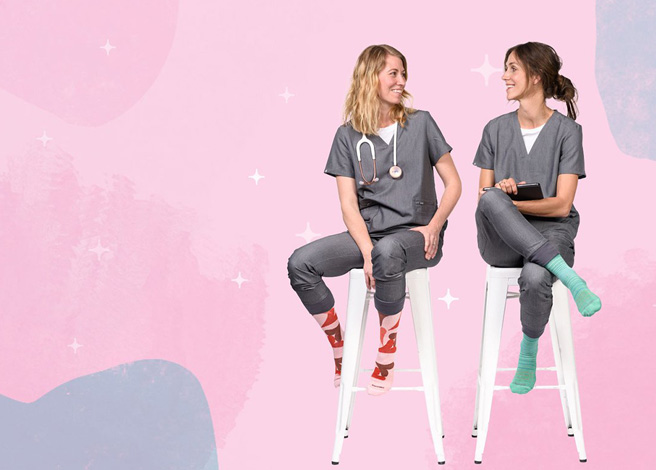
Nurses often work long hours, sometimes even skipping breaks, which puts a lot of stress on their legs and feet. It is necessary that they maintain their overall physical health to ensure they can provide effective care for their patients.
One way of doing so is by putting on compression socks. Hosiery with a pressure rating of 20 mmHg to 30 mmHg offer calf, ankle, and foot supports.
This article explains why nurses may decide to wear compression socks, what benefits they gain from wearing them and what should be considered before purchasing a pair.
Let’s talk about why do nurses wear compression socks?

Why do they wear them?

Compression socks are mainly sought out by runners and prescribed for bedridden patients and elders.
They have gained popularity over time, in which several modifications to their design have allowed a wider array of individuals of various professions to use them, such as pilots, cyclists, and nurses. Hosiery with a pressure rating of 20 mmHg to 30 mmHg offer calf, ankle, and foot supports.
There are several benefits of wearing compression socks, which justifies why many individuals of various backgrounds are open to them.
Nurses are one of the largest benefactors because recent nursing compression socks have become more comfortable than they were before. Basically, 20 mmHg to 30 mmHg hoses offer calf, ankle, and foot supports.

Below is a list of benefits as to why nurses would wear compression socks:

1. Reduces muscle fatigue and minimize swelling in the legs or feet and muscle pain
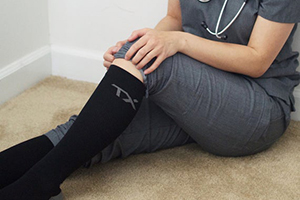
In order for nurses to work effectively and enjoy any amount of free time they get, putting on pressure hoses can help boost circulation which will reduce leg fatigue and prevent swelling and muscle pain. With barely to no fatigue, nurses would be able to move on the job with ease and will not need to take medications for leg aches. As pressure hoses also prevent muscle pain in the legs, nurses would be able to handle their busy schedule with more energy and strength.
2. Provides gentle pressure to the legs and feet
Compression socks work by adding gentle pressure to the calves, ankle and feet which prevents pooling of blood in the veins in the calves. and ensures proper circulation. This is particularly helpful as nurses are constantly standing and walking as they work.
3. Prevents development of serious health issues, such as varicose veins and spider veins
Several health issues, such as varicose veins and spider veins, can arise due to improper blood flow in the legs. Severe cases, such as deep vein thrombosis in which blood clots occur in the thigh or leg can break off as an embolus and make its way to the lung, are also possible. Compression socks can help prevent these from occurring, provided that a nurse wears the proper compression level and size.

4. Convenient, easy to wear, and quick to put on
Compression socks are designed to be breathable and comfortable. They are not difficult to put on or remove. They also have an elasticity which ensures they remain firm despite vigorous activity; although, they are ideally replaced after five or six months.
5. Professional and attractive designs
Working in a professional environment normally requires wearing medical attire of neutral colors; compression socks are available in plain design, such as in black or white, which nurses may opt to wear. However, compression socks are also sold in a variety of color and patterns, should nurses ever need something more colorful.
What should be considered before buying a pair of pressure hoses?
Finding the perfect compression socks would depend on its compression level, comfort, style, and quality.
1. Compression level
It is necessary that one understands the various compression levels available as each level provides different pressure; the higher the level, the greater the pressure. Wearing socks with a compression level that is too weak or strong on one’s legs would be ineffective.
Nurses, who are most likely to be active, may choose to wear a mild compression level of 8-15 mmHg (mmHg = ‘millimeters of mercury’, a unit of measurement for pressure).
2. Comfort
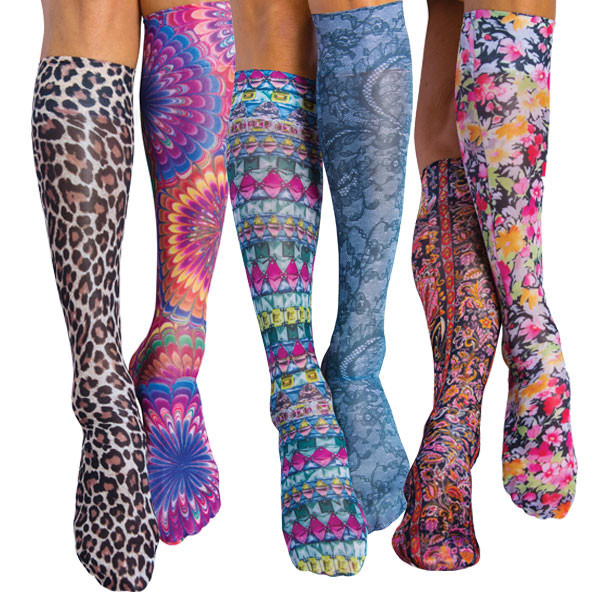
Nurses would seek a pair of compression socks that are comfortable to wear throughout their work shift.
This would depend on the fabric the compression socks are made out of. Cotton is commonly accepted and enjoyed for its breathable quality.
Nurses would need to consider which materials are safe for their skin to avoid any allergic reactions or irritation.
3. Style
The style of compression socks may not be highly necessary for nurses, but a simple style made of one color or pattern may be preferable for work. Compression socks also come in different lengths: ankle-high, knee-high or thigh-high; nurses may decide according to their medical uniform and comfort.
4. Quality
The quality of the compression socks is important to ensure that they provide compression effectively, can be used for months and does not tear easily. Paying for a pair that is slightly costly but good quality would be worth the investment, as opposed to frequently spending on a pair of poorly made compression socks.
What other ways are there to take care of one’s limbs and feet?
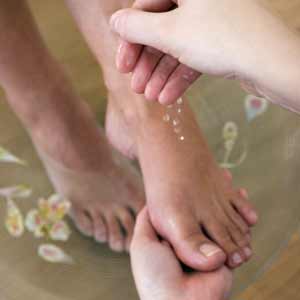
Apart from putting on pressure hosiery, nurses can also do the following to ensure their legs and feet are well taken care of:
1. Regular stretching
Stretching often works up the muscles, reinvigorates the flow of blood and promotes flexibility.
2. Icing
Icing stiff, sore muscles would provide relief and help reinvigorate them, making them feel fresh again.
3. Massaging
Massaging legs and feet can temporarily alleviate aches or sores. Using massaging equipment can be helpful as well, such as massage rollers, but might preferably used outside of working hours.
4. Elevating legs and feet during rest
Keeping one’s legs feet elevated using a pillow or chair can reduce inflammation and improve blood circulation.
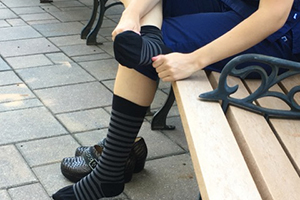
What Conditions Do These Hosiery Treat?
- Varicose veins
- Spider veins
- Peripheral edema
- Pedal edema
- Lymphedema
- Diabetic neuropathy
- Achilles tendinitis
- Plantar fasciitis
- DVT
- Restlessness
- Leg Fatigue
- Lactic acid
Compression Hoses are a Necessity for Nurses
Nurses Compression socks are almost a necessity for the job. With the great returns generated from wearing them, it is likely that nurses will continue to use them for a long time.
This page last updated November 5, 2022
